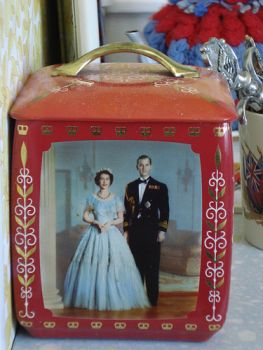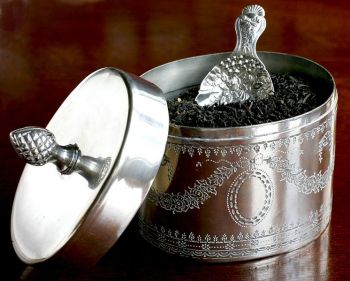Tea Caddy
Tea caddy is a special box, pot or other kind of container used for keeping loose leaf tea. Word caddy comes from Malay Chinese “kati”, which is a unit of mass used on markets in Eastern and Southeastern Asia. One catty equals 600 grams or 21 ounces.
 Coronation tea caddy
Coronation tea caddy
Tea caddy can have one, two or three chambers. Materials used in making of caddy must not react with tea. They should keep the tea safe from moisture too. The sunlight damages the quality of tea. That is why tea caddy should always be made of opaque material.
Tea caddies are made of porcelain, wood, pewter, brass, copper, silver and tortoise-shell. Different wood can be used – mahogany, rose-wood, satin-wood etc. Materials can often be combined. Some wooden tea caddies, for example, have ivory or silver knobs.
The oldest wooden caddies are from the Queen Anne period, meaning during the reign (1702-1714) of Queen Anne. These caddies often had two or three sections – for black tea, green tea and sometimes sugar. Later in the 18th century people started to prefer smaller caddies without division into sections. Such caddies were square, oval or of multi-sided shapes.
 Silver tea caddy
Silver tea caddy
Type of wooden caddies that also appeared in the 18th century are so called fruit caddies. Wood used in making of certain fruit caddy often corresponds with fruit it depicts. The finest fruit caddies were made in the late 18th century England and early 19th century Germany. European fruit caddies usually have shape of an apple or pear. They have hinged lids, simple metal (silver, iron or steel) decoration and are lined with some lead foil. Oriental fruit caddies shaped like an aubergine can reach very high price at today's auctions. Their main characteristic is a threaded top that covers a tight-fitting inner lid.